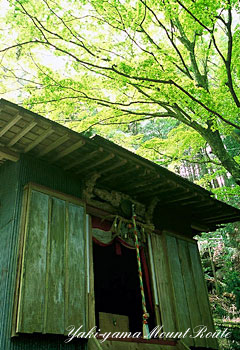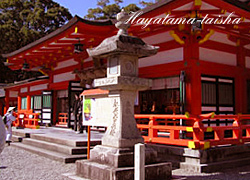 Kumano Kodo is the general name for the ancient pilgrimage trails linking Kumano Sanzan, the three grand shrines of Kumano: Hongu-taisha, Nachi-taisha and Hayatama-taisha. There were many routes starting from Ise, Yoshino, Koya-san, Kyoto and others, of which the two most popular trails were Kii-ji, the western route from the Kii Peninsula, and Ise-ji, the eastern route in the Kii Peninsula.
Kumano Kodo is the general name for the ancient pilgrimage trails linking Kumano Sanzan, the three grand shrines of Kumano: Hongu-taisha, Nachi-taisha and Hayatama-taisha. There were many routes starting from Ise, Yoshino, Koya-san, Kyoto and others, of which the two most popular trails were Kii-ji, the western route from the Kii Peninsula, and Ise-ji, the eastern route in the Kii Peninsula.The Kii-ji Route was used by the Imperial family and noblemen, from the middle of the Heian Period (794-1192) to the Kamakura Period (1192-1333). The Ise-ji Route became popular among the common people in the Edo Period. Pilgrims who completed their visit to Ise-jingu, the Grand Shrines of Ise equipped themselves with the appropriate white robe for pilgrimage in Western Japan at the town of Tamaru, the starting point of the pilgrimage to Kumano. Those who did the 33-temple pilgrimage also headed for Nachi, where the first temple on the itinerary of the pilgrimage was located. In the Kii Peninsula where rugged mountains frame the coastline and there is much precipitation, stone paths were made along the steep parts of the pass to prevent disintegration due to heavy rainfall. Pilgrims walked over many steep passes to the venerated Kumano Sanzan. Pilgrims walking in a line along the narrow stone path was known as “pilgrimage of ants to Kumano”.
Kumano Kodo survived development because of its steep slopes, and was revived into a pleasant hiking path. Walking on the moss covered stone path through thick forests, hikers can feel the atmosphere of the ancient pilgrimage, listen to the sound of crystal-clear streams, and view historical monuments and stone images of Buddha.

 Kumano Sanzan, the three grand shrines of Hongu-taisha,
Kumano Sanzan, the three grand shrines of Hongu-taisha, 



